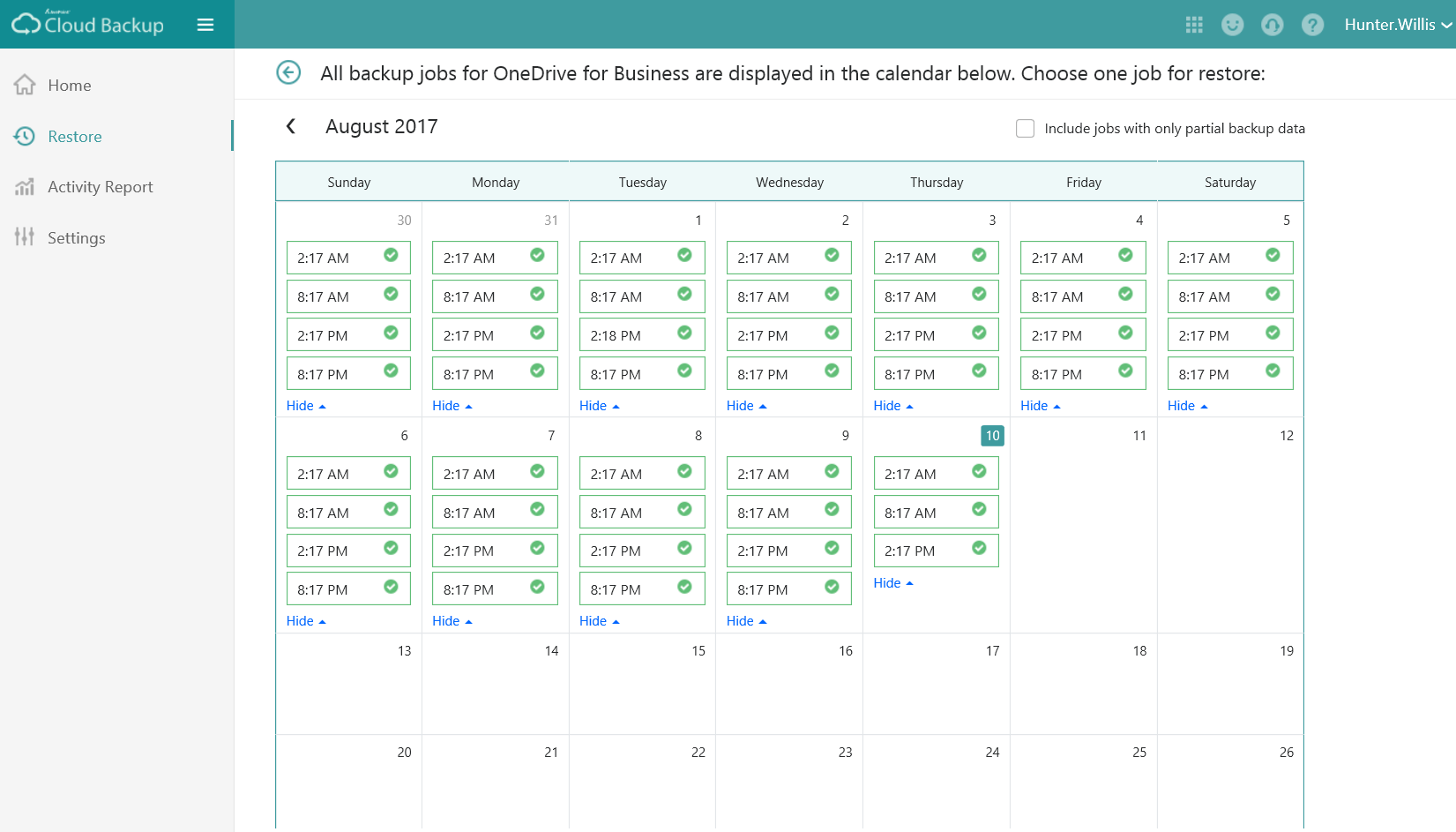Are you ready to take control of your company’s data? Download a free trial of our award winning SharePoint Backup Software!
When businesses make the move to Office 365 and SharePoint Online, admins immediately reap the benefits of the cloud. Having someone else deal with the stress and cost of maintaining servers and storage is a huge relief. But the caveat to someone else hosting your data is that you no longer have direct access to databases. So how do you implement your SharePoint Online backup strategy when you don’t own your servers? Let’s take a look at how this works:
Native SharePoint Online Backup and Restore
Where Deleted Objects Go
SharePoint Online holds deleted data in the same tiered recycle bin structure as SharePoint Server. Site level recycle bins will hold on to items and documents for 90 days, and the admin only “Second Stage Recycle Bin” will hold on to libraries, sites, and site collections for 90 days. The flow is as follows:
- Deleted libraries, sites, and site collections go directly to the Second Stage Recycle Bin.
- Deleted documents or items go directly to the site level recycle bin. If it is manually deleted from that recycle bin before 90 days, it will be moved to the Second Stage Recycle bin. Note that SharePoint Online gets rid of items 90 days after the day they were originally deleted — that means if your document spent 88 days in the site recycle bin it will only stay in the Second Stage Recycle Bin for 2 days before it is automatically deleted.
How to Restore Deleted Objects
Once data is lost, you have three opportunities to recapture it:
- Restoring Site Collections, Subsites, and Libraries from the Recycle Bin: Your time limit to recover deleted site collections, subsites, or libraries is 90 days from the date that it was deleted. If you delete a site collection, subsite, or library in the Recycle Bin permanently before that time is up, an admin can still restore it by accessing the Second Stage Recycle Bin. Once the 90-day service level agreement (SLA) is up, the data in the Recycle Bin is deleted beyond any manual restore.
- Restoring Items from the Recycle Bin: Your time limit to restore an individual item from the site level recycling bin is 90 days from the date that it was deleted. From here, a user can do it themselves by visiting the site where the item was deleted, clicking the Recycle Bin, and selecting the item. If they are deleted from the site level, an admin will have to restore it in a process similar to method one.
- Restoring Data after Deletion from the Recycle Bin: You have an additional 14 days post-deletion from the Recycle Bin to submit a service ticket to restore deleted data – but the data must come from one of the backups Microsoft performs twice a day.
There is no SLA for method three, and after 14 days, there is NO GUARANTEE that your data can be restored. When Microsoft restores your data, it will come in the form of an in-place, full site collection-level restore. Duplicate items are appended with a “_1” and none where there is no conflict. This leaves you to sort out the items in your libraries.
The Problem with Native SharePoint Online Backup and Restore
Whether backing up your data is simply a comforting safeguard or an SLA-driven, auditable process, it is clear native functionalities greatly limit the comprehensiveness and flexibility of what you can do. You can hold data in a Recycle Bin, but it must be restored in place, there is a very strict Microsoft SLA for how long that data is retained, and 14 days after the Recycle Bin deletes it, it is gone forever. More importantly, there is no control over how, when, or where the data is copied and saved outside of the in-place Recycle Bin, no option for a point-in-time restore, and no ability to perform an out-of-place restore.
Backup and Restore with AvePoint
The best way to fill those gaps is to go around them with a new process — one that works outside of the Recycle Bin and puts you in full control of the what, how often, where, and how your data is retained and restored. Here’s how it works with AvePoint’s SaaS Cloud Backup solution.

Choose Anything You Want to Backup
With AvePoint Cloud Backup, you can back up your content in your SharePoint Online sites, One Drives, Groups and Teams Sites, and Exchange up to four times per day. You have many options including backup up versions and workflows, and can choose whether or not to backup data located in either Office 365 Groups, SharePoint Online, One Drives for Business, Exchange, Exchange Public Folders and Project Online if you so desire. We can even support Dynamics 365.
Store Your Backup Data How You Want to
If you choose to use AvePoint’s backup engine along with their storage option, AvePoint will hold all your backup data for a full year in their Microsoft Azure space. You may also choose their “bring your own storage” option if you want more control over your data. With this option, AvePoint’s Cloud Backup allows you to save your proprietary .bak files to a custom storage policy. This means you can add a retention policy for each backup and, more importantly, store your backups anywhere. Put them in Azure or use another cloud storage vendor. You can even store them on an old server environment via FTP or SFTP if you don’t want to purchase more cloud storage.
Restore Your Data Where You Need it
You have the option to bring back an entire site collection or a single document, and the flexibility to restore it at an exact point in time to an exact location in SharePoint Online, OneDrive for Business, or Exchange Online. Restores through DocAve also provide automatic conflict resolution for item-dependent columns and content types, workflow definitions, and versions.

How AvePoint Cloud Backup Works
Because AvePoint Cloud Backup is a SaaS solution fully hosted in Azure, there is no additional hardware necessary. All you have to do is register with a global admin account and point it at your Office 365 environment.
Try it Yourself!
Don’t take our word for it. Try it yourself free for 30 days!




